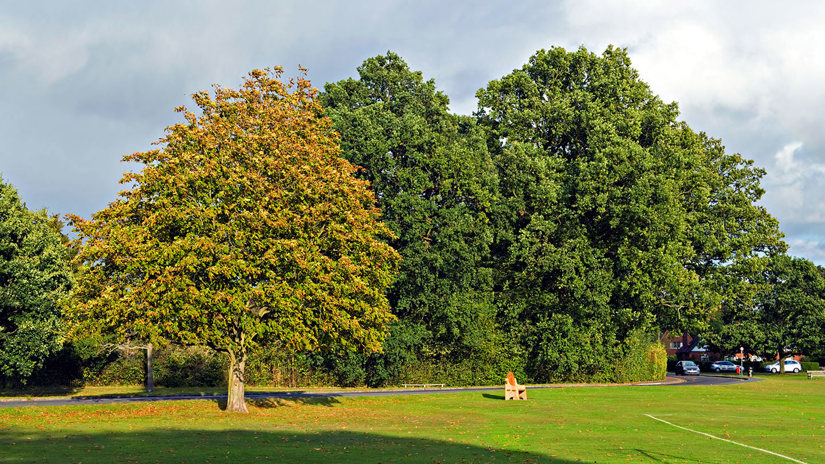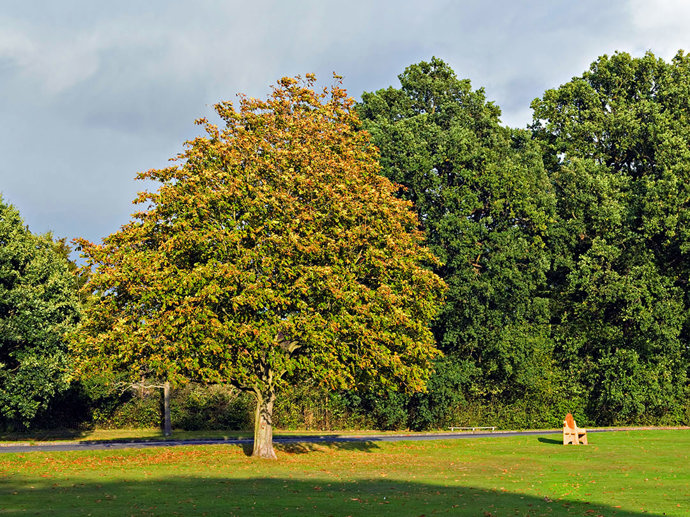Common name: horse chestnut bleeding canker
Scientific name: Pseudomonas syringae pv. aesculi
What does it affect?: horse chestnut
Areas affected so far: across the UK
Origin: thought to be India
Huge horse chestnut trees are icons in our parks and gardens, but they are under threat from two invaders: a bacterium and a leaf miner.

Common name: horse chestnut bleeding canker
Scientific name: Pseudomonas syringae pv. aesculi
What does it affect?: horse chestnut
Areas affected so far: across the UK
Origin: thought to be India
Trees of all ages can be affected by horse chestnut bleeding canker. Some infections can last for years with little impact on the crown, while some spread rapidly and cause crown thinning, die-back, and sometimes death of part of or even the whole tree.
Symptoms include:
Horse chestnut bleeding canker is a bacterial pathogen.
The bacteria multiply within the water transport systems of the tree just under the bark, eventually blocking them. This causes the tree to die because it can no longer take up water.
We don’t know how horse chestnut bleeding canker got to the UK. It was first recorded in the 1970s but was relatively uncommon until the mid-2000s.
The severity of infection can vary tree to tree. Some can withstand years of infection while others can die within a few years. The last survey for the disease was undertaken in 2007 and it found that 36% of the horse chestnut trees surveyed in Wales and 76% of the trees surveyed in South East England showed symptoms. The impact therefore could be significant with the loss of many mature horse chestnut trees.
To combat pests and diseases like horse chestnut bleeding canker we have:


We are fighting back against pests and diseases. Find out what we're doing to prevent the spread and protect the UK’s trees.
More pests and diseases: